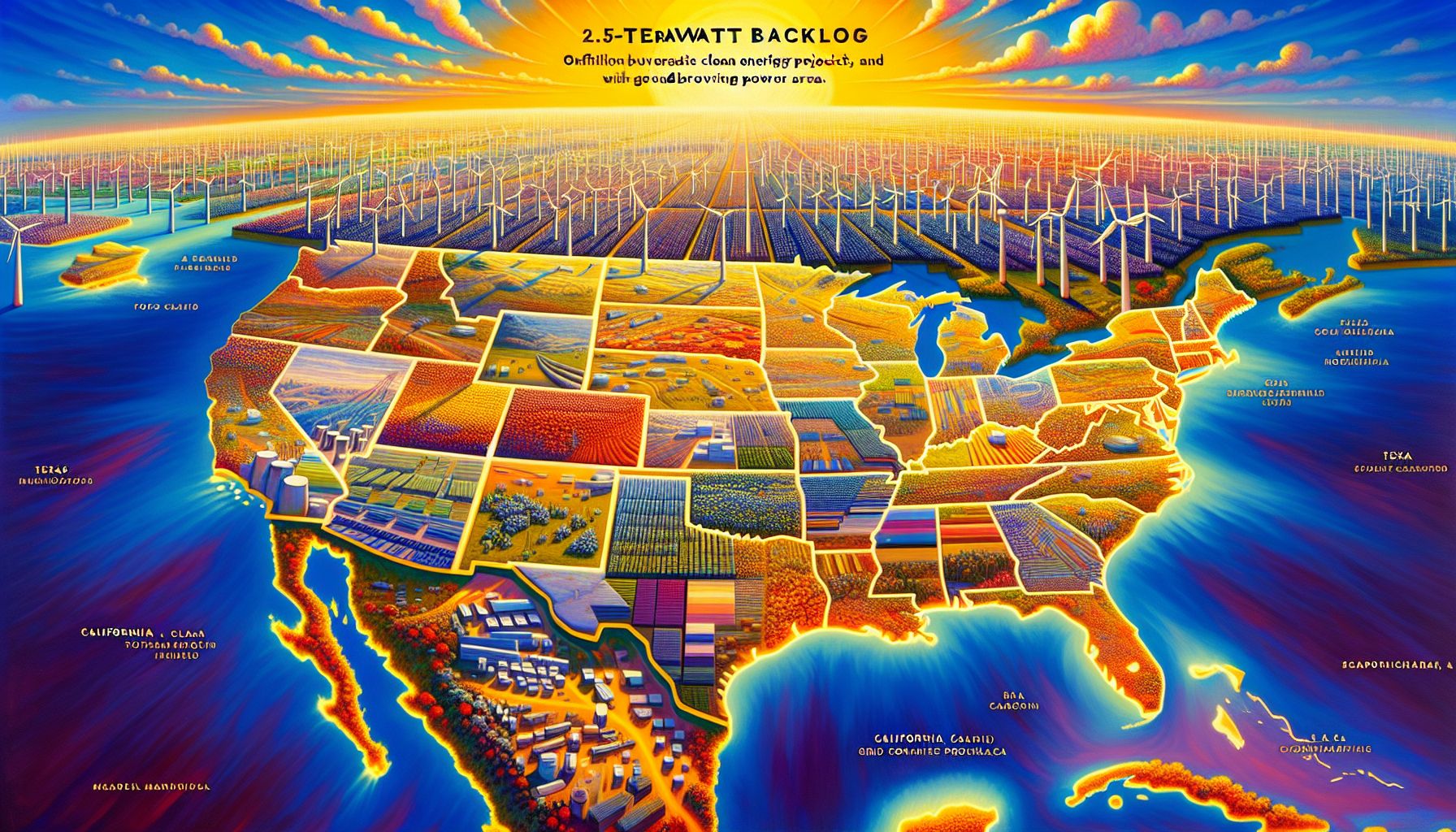Clean Energy Projects Face Grid Connection Hurdles Across US

San Francisco, Tuesday, 23 July 2024.
A 2.5-terawatt backlog of clean energy projects awaits grid connection in the U.S. Innovative solutions emerge in California, Texas, and the Southwest Power Pool to expedite the process, potentially revolutionizing the expansion of renewable energy infrastructure.
California’s Innovative Project Scoring Criteria
California is at the forefront of addressing the backlog with its new project scoring criteria. The California Independent System Operator (CAISO) has introduced a zonal approach, focusing on identifying and prioritizing projects where transmission capacity either exists or is planned. This approach is designed to streamline the interconnection process, ensuring that viable projects are fast-tracked based on their operational readiness and system value. Projects are scored on viability criteria, system-wide or local resource adequacy, and commercial interest. However, concerns have been raised about the influence of load-serving entities (LSEs) on the commercial interest score, which could lead to potential manipulation[1].
Texas’ ‘Connect and Manage’ Option
In Texas, the Electric Reliability Council of Texas (ERCOT) has implemented the ‘connect and manage’ option, which allows developers to interconnect projects without bearing the system upgrade costs. This has led to successful interconnections and accelerated the expansion of new generation projects. However, this approach requires proactive transmission planning to manage congestion and address challenges in non-energy-only markets. The Texas model has been praised for its efficiency but also highlights the need for careful management to ensure long-term sustainability[1].
Southwest Power Pool’s Integrated Planning
The Southwest Power Pool (SPP) is taking a holistic approach by merging system planning with the interconnection process across its multi-state region. By integrating planning, procurement, and interconnection, SPP aims to create a more streamlined and efficient process. This approach is expected to reduce the backlog and facilitate the timely completion of clean energy projects. SPP’s plan is seen as a model for other regions seeking to address similar interconnection challenges[1].
Federal Energy Regulatory Commission’s Role
The Federal Energy Regulatory Commission (FERC) has also played a pivotal role with its Order 2023, which established new requirements for the interconnection process. This order aims to streamline the process and impose financial penalties on providers and operators who fail to comply. While FERC’s order is a significant step forward, further reforms are necessary to fully address the backlog. Notably, some grid operators, like PJM Interconnection, are seeking rehearings of the order, arguing that it is overly prescriptive in certain areas[1][2].
Challenges and Future Prospects
Despite these innovative solutions, challenges remain. In Maryland, for instance, clean energy projects face a five- to six-year backlog, exacerbated by the continued operation of coal-fired power plants. Maryland officials, including Governor Moore, are urging PJM Interconnection to speed up transmission expansion and comply with federal orders. The situation underscores the need for coordinated efforts and comprehensive planning to integrate renewable energy sources efficiently[2].
Conclusion
The 2.5-TW backlog of clean energy projects in the U.S. represents both a challenge and an opportunity. With innovative approaches emerging in California, Texas, and the Southwest Power Pool, there is potential to revolutionize the expansion of renewable energy infrastructure. However, these efforts must be accompanied by robust federal and regional cooperation to ensure that the transition to clean energy is both efficient and equitable. As stakeholders continue to navigate these complexities, the future of clean energy in the U.S. will depend on the successful implementation of these innovative solutions[1][2].

